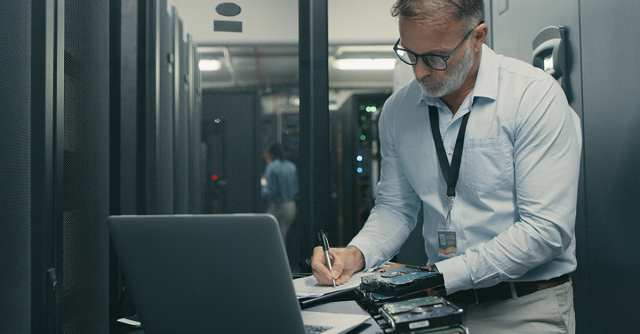Can your disaster recovery plan keep your business always on?
In the event of a disaster, will your disaster recovery plan keep your business running normally? All organizations face the threat of a disaster but many are not addressing the risk—at least not effectively.

Even though an estimated 95% of enterprises have some form of a disaster recovery plan, Forrester research found that only 18% of surveyed business and IT professionals consider their businesses prepared to handle a disaster.
Reasons offered for their lack of confidence included insufficient testing, lack of staff, misalignment between the plan and the current IT environment, and mismatched expectations between business needs and IT.
Most businesses have a standard disaster recovery plan that defines processes and procedures to guide employees on how to act if a natural disaster strikes, what to do in case of a network outage, and how often to back up mission-critical data. Some, more sophisticated plans also include an architected multi-datacenter strategy that mirrors key applications between locations to ensure employees will be able to log in and keep the business running normally if the production site goes off-line.
However, many DR plans are created with a set-it-and-forget-it mentality—professionals often view them as insurance policies that the business hopefully will never have to rely on.
The face of disaster has changed
From the rise in sophisticated cybercrime to rapid technology-driven innovation to novel, natural catastrophes, the face of disruption and the pace of business have transformed since most plans were created.
Nearly 25% of all disaster recovery plans have never been tested
Consumers rarely buy a car without a test drive to make sure that it operates as promised, and it is equally peculiar for IT professionals to invest in the implementation of a disaster recovery strategy and never test it. The first failure should not be the first test, and for that reason alone, many disaster recovery plans are deficient. Businesses need to be confident upfront that there are no unforeseen elements the plan does not cover.
The face of disaster is changing
Cybercrime and natural disasters are on the rise. Global damages related to cybercrime will reach $6 trillion in 2021, and in Q4 2019, the average downtime caused by a ransomware attack was 12.1 days—nearly double what it was at the same time in 2018, according to Cybersecurity Ventures. For the fifth consecutive year, 10 or more natural disasters cost the United States more than a billion dollars last year, according to the National Oceanic and Atmospheric Administration (NOAA).
Technology-driven innovation is speeding up the pace of business
IT has gone from being part of the back office to being the means by which business is conducted in the public sphere and differentiated in the marketplace. The tolerance for downtime is shrinking.
With e-commerce giants conducting more than 300 transactions per second, and retail businesses ringing up more than half a million dollars in sales per minute, one minute of data loss can create an irreparable impact on a business. In addition to the lost revenue, organizations must manage the complexity of untangling customer interactions, make sure that instructions to warehouses or production sites aren’t lost or duplicated and—simultaneously—deal with the compliance implications of a data breach.
Enter disaster recovery-as-a-service
Despite the importance of an effective DR solution to ensure business continuity in the event of a disaster, organizations often do not have the necessary budget, expertise, or time to design and execute an in-house DR plan that fail-proofs the business—much less regularly test it for disaster readiness.
This is why we are witnessing the rise of disaster recovery-as-a-service (DRaaS). Businesses are turning to DRaaS to ensure business continuity in the face of an unforeseen event. With DRaaS, IT professionals can fail-safe their business-critical data, applications, and systems by working with a third-party service provider to deploy continuous replication to a safe, secure, and dynamic cloud.
In implementing a DRaaS strategy, IT professionals should evaluate unique business needs and expectations, potential technological growth, and the business’s tolerance for recovery time objectives (RTOs) and restore point objectives (RPOs), and then find a service provider that is able to craft a solution that meets both current and possible future business needs.
The service provider will then act as a partner to assess objectives before deploying a tailored solution that fail-safes the environment. By engaging third-party expertise, IT professionals are able to focus badly needed resources on more strategic endeavors without leaving their businesses vulnerable to attack.






